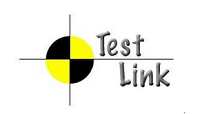Description

LabVIEW

TestLink
Comprehensive Overview: LabVIEW vs TestLink
LabVIEW and TestLink are both prominent tools used in different areas of engineering and software development, and they cater to specific aspects of the testing and development process. Here’s an overview of each:
LabVIEW
a) Primary Functions and Target Markets:
-
Primary Functions:
- LabVIEW (Laboratory Virtual Instrument Engineering Workbench) is a system-design platform and development environment from National Instruments. It is primarily used for graphical programming to develop test, measurement, and control systems. The key feature of LabVIEW is its graphical programming language, G, which allows users to visually create code through wiring diagrams that couple functional nodes.
- LabVIEW is effective in data acquisition, instrument control, and industrial automation tasks. It supports a variety of hardware interfaces, allowing seamless integration with many types of laboratory instruments.
-
Target Markets:
- LabVIEW is widely used in research laboratories, educational institutions, and across industries such as aerospace, telecommunications, manufacturing, automotive, and electronics. It caters to scientists, engineers, and professionals involved in creating complex physical systems, conducting experimentation, and automating test setups.
b) Market Share and User Base:
- LabVIEW is a widely adopted platform in industries that require robust test and automation solutions. While specific market share data might be proprietary, National Instruments, the company behind LabVIEW, is a leader in the fields of test and measurement. The user base is extensive, including academic researchers, industrial automation specialists, and engineers in high-tech fields.
c) Key Differentiating Factors:
- Graphical Programming: One of LabVIEW’s defining features is its graphical programming environment that abstracts many complexities of traditional coding. This user-friendly interface enables rapid prototyping and ease of use.
- Integration with NI Hardware: LabVIEW’s deep integration with National Instruments’ hardware provides a seamless solution for hardware-driven applications.
- Community and Support: LabVIEW has a longstanding history and a vibrant community, along with comprehensive training and support resources.
TestLink
a) Primary Functions and Target Markets:
-
Primary Functions:
- TestLink is an open-source test management tool that facilitates the management of test cases and plans. It is used to manage testing activities and supports the full lifecycle of a test case from creation through execution and reports.
- TestLink provides features for organizing test cases, executing tests, and reporting on test results. It integrates with various bug tracking systems and Continuous Integration (CI) tools, aiding in streamlined defect management and collaboration.
-
Target Markets:
- TestLink is primarily targeted at software development teams and QA departments. It is used across various industries by teams seeking a cost-effective solution for managing software testing processes, including IT services, software development companies, and other sectors requiring methodical testing and quality assurance practices.
b) Market Share and User Base:
- TestLink, given its open-source nature, has a widespread but less formalized user base compared to commercial tools. It is popular among small to medium-sized enterprises and independent developers who benefit from its free licensing and community support. Although it may not command significant market share compared to proprietary test management software like TestRail or Zephyr, it has a dedicated following in the open-source community.
c) Key Differentiating Factors:
- Open-Source: As an open-source tool, TestLink allows for extensive customization and flexibility, catering to teams that need adaptability without the associated licensing costs.
- Integration Capabilities: TestLink offers robust integration options with other development and bug-tracking tools, enhancing its functionality within a DevOps or Agile workflow.
- Cost-Effectiveness: Being open-source, TestLink provides significant cost savings over proprietary test management tools, making it attractive to budget-conscious teams.
Comparative Analysis:
-
Integration to Physical Systems: LabVIEW excels in scenarios where integration with physical hardware and instruments is critical, leveraging its strong ties with National Instruments products. In contrast, TestLink focuses on managing software testing processes, emphasizing compatibility with other software tools rather than hardware.
-
User Interface and Programming Approach: LabVIEW’s graphical, flowchart-based programming is starkly different from the traditional, web-based user interface of TestLink, which is more suited to managing data and test case documentation.
-
Suitability: LabVIEW is more suitable for engineering and manufacturing environments needing in-depth system and instrument control, while TestLink is ideal for software development environments focusing on managing and executing test cases and tracking bugs.
-
Cost Models: LabVIEW requires a commercial license with potential costs associated with additional hardware support, whereas TestLink, being open-source, provides a cost-effective alternative for test case management without proprietary fees.
Overall, LabVIEW and TestLink serve different niches, with LabVIEW focusing on the integration and control of hardware-related processes and TestLink addressing software test management needs.
Contact Info

Year founded :
Not Available
Not Available
Not Available
Not Available
Not Available

Year founded :
Not Available
Not Available
Not Available
Italy
Not Available
Feature Similarity Breakdown: LabVIEW, TestLink
LabVIEW and TestLink are both tools used in engineering and testing environments, but they serve different primary purposes. LabVIEW, developed by National Instruments, is a system-design platform and development environment primarily for data acquisition, instrument control, and industrial automation. TestLink, on the other hand, is an open-source test management tool, primarily used for managing and tracking software testing processes.
Here's a breakdown of the feature similarities and differences between LabVIEW and TestLink:
a) Core Features in Common
-
Test Management:
- Both LabVIEW and TestLink can be used to design and manage various test cases.
- They allow tracking of test execution and reporting of test results, albeit in different contexts.
-
Customization/Scripting:
- Both platforms allow for customization to suit specific project requirements. LabVIEW does this through its graphical programming language (G), while TestLink offers customization primarily through API integration and plugins.
-
Integration Capabilities:
- LabVIEW integrates with a wide range of hardware devices and external software tools. TestLink offers integration with other software tools, particularly for bug tracking (e.g., JIRA, Bugzilla).
b) User Interface Comparison
-
LabVIEW:
- Has a graphical, flowchart-like interface that is very intuitive for users familiar with engineering and physical system representations.
- Designed for creating virtual instruments and systems using a drag-and-drop approach.
- It is more complex and requires training for users to fully leverage its capabilities.
-
TestLink:
- Features a more straightforward web-based interface designed for managing test cases and plans.
- The interface is organized around test projects and suites, and it can track results and requirements.
- Easier for testers and test managers to learn, focusing on clarity and accessibility rather than complex system design.
c) Unique Features
LabVIEW:
- Graphical Programming: LabVIEW’s graphical coding environment is unique, allowing users to construct programs by wiring together function nodes to control hardware devices.
- Extensive Hardware Support: LabVIEW shines in scenarios where tight hardware integration is needed, particularly for measurement and automation systems.
- Real-Time and FPGA Support: Comes with the ability to develop applications for real-time systems and FPGA hardware, which is particularly useful for high-speed data acquisition and processing.
TestLink:
- Test Case Management: TestLink specializes in managing and organizing large volumes of test cases and test plans, which is not a focus of LabVIEW.
- Requirements and Defect Management: Offers features directly aimed at managing requirements and defects, with integration into other tools used in software development teams.
- Open Source: As an open-source tool, TestLink provides the opportunity for customization and cost savings in environments where budget is a concern.
In summary, while there is some overlap in their capabilities concerning test management and customization, LabVIEW and TestLink are fundamentally different tools catering to different domains—physical system design versus test management, respectively. Each has unique features tailored to its core use cases.
Features

Not Available

Not Available
Best Fit Use Cases: LabVIEW, TestLink
LabVIEW and TestLink serve different purposes and are used across various industries and company sizes. Here's a detailed breakdown of their best fit use cases:
LabVIEW
a) Business or Project Types: LabVIEW (Laboratory Virtual Instrument Engineering Workbench) is best suited for:
-
Engineering and Scientific Applications: Ideal for building systems that require data acquisition, instrument control, and industrial automation. LabVIEW's graphical programming approach simplifies system development processes for engineers and scientists.
-
Test and Measurement: Extensively used in industries where precise measurements and tests are critical, such as electronics, telecommunications, and manufacturing.
-
Prototyping and Rapid Development: Its intuitive interface allows for quick prototyping of complex systems, making it useful in both research and development settings.
-
Educational Institutions: Commonly used in academia for teaching concepts related to control systems and signal processing due to its user-friendly design and comprehensive data visualization tools.
TestLink
b) Preferred Scenarios: TestLink is a web-based test management tool that is optimal for:
-
Software Development Projects: Particularly beneficial in environments that follow Agile methodologies or continuous integration/continuous deployment (CI/CD) pipelines. It helps manage test cases, plans, and execution within software projects.
-
Quality Assurance Teams: Useful for QA teams that need to maintain organized and consistent testing processes, track test coverage, and manage test environments across multiple projects.
-
SMEs to Large Enterprises: Scalable solution for companies of various sizes looking for structured and collaborative test management.
d) Industry Verticals and Company Sizes
LabVIEW:
-
Industry Verticals: Highly used in the automotive, aerospace, defense, telecommunications, semiconductors, and healthcare industries. Its broad applicability in any field where equipment and process testing and development are necessary make it versatile.
-
Company Sizes: From small startups in the research and development stage to large enterprises with dedicated testing and instrumentation departments, LabVIEW can cater to a broad range of needs due to its modular and scalable nature.
TestLink:
-
Industry Verticals: Primarily serves industries heavily reliant on software development and testing, such as IT services, finance, healthcare, and e-commerce. It supports environments where clear and efficient test management processes are necessary.
-
Company Sizes: Suitable for small to large organizations. While smaller companies can use it to structure their QA processes, larger enterprises benefit from its ability to integrate with various other development and testing tools, supporting complex projects with numerous stakeholders.
Both LabVIEW and TestLink provide distinct benefits but are used for different types of projects and industries. LabVIEW excels in hardware-related test and measurement environments, while TestLink is dedicated to improving efficiency and structure in software testing processes.
Pricing

Pricing Not Available

Pricing Not Available
Metrics History
Metrics History
Comparing undefined across companies
Conclusion & Final Verdict: LabVIEW vs TestLink
Sure, I can provide a conclusion and final verdict for LabVIEW and TestLink, considering various factors such as functionality, usability, scalability, and cost. Below are the details organized as per your request:
a) Considering all factors, which product offers the best overall value?
Best Overall Value: LabVIEW
LabVIEW generally offers more comprehensive capabilities in terms of functionality, especially for users needing to develop and implement complex testing solutions. Its robust graphical programming environment and extensive support for hardware integration make it a valuable tool for many engineering and testing applications. While it can be more expensive upfront and require significant time investment to master, the return in terms of functionality and capability can outweigh the initial costs, particularly for advanced or complex testing scenarios.
b) Pros and Cons
LabVIEW
Pros:
- Comprehensive Toolset: LabVIEW provides a robust suite of tools for data acquisition, instrument control, and test automation.
- Graphical Programming: The graphical interface can be intuitive for users who benefit from visual coding.
- Integration Capabilities: Strong integration with a wide range of hardware devices and software tools.
- Community and Support: Strong community and extensive resources available for troubleshooting and learning.
Cons:
- Cost: LabVIEW can be quite expensive, especially for small businesses or individual users.
- Learning Curve: It has a steeper learning curve, particularly for users not familiar with graphical programming environments.
- Overkill for Simple Projects: It may be more than necessary for simple or straightforward testing needs.
TestLink
Pros:
- Cost-Effective: Open-source tool, making it a very cost-effective option for test management.
- Test Case Management: Excellent at handling test plans, including writing test cases and tracking their execution.
- Web-Based: Being web-based, it's accessible from anywhere and easy to deploy in various environments.
- Integration: Supports integration with various bug tracking and automation tools, enhancing its flexibility.
Cons:
- Limited Offline Capabilities: As a web-based tool, users have limited options to work offline.
- Less Suitable for Complex Testing: While great for test management, TestLink is less applicable for real-time system testing or complex test automation.
- User Interface: The interface can feel outdated and lack intuitive navigation compared to modern testing tools.
c) Specific Recommendations for Users
-
Consider Your Project Needs: If your projects frequently require sophisticated test automation and you need extensive data acquisition capabilities, LabVIEW might be the better choice despite its higher cost and steeper learning curve.
-
Budget Constraints and Simplicity: For users or organizations with a limited budget who primarily need a test management solution rather than a full-fledged testing environment, TestLink provides excellent value with its zero-cost licensing and focus on test documentation and case management.
-
Integration and Scaling Needs: Evaluate your existing systems and tools. If you require tight integration with hardware or plan to scale your testing capabilities significantly, LabVIEW could offer more in terms of future-proofing and extensibility. On the other hand, if you're looking for solid test management with integration to existing bug tracking systems, TestLink could be sufficient.
Ultimately, the choice between LabVIEW and TestLink hinges on the specific needs of your projects, your budget, and your long-term plans for test system development and maintenance. Consider starting with TestLink for test management needs and moving to LabVIEW as project complexity and budget allow.
Add to compare
Add similar companies



